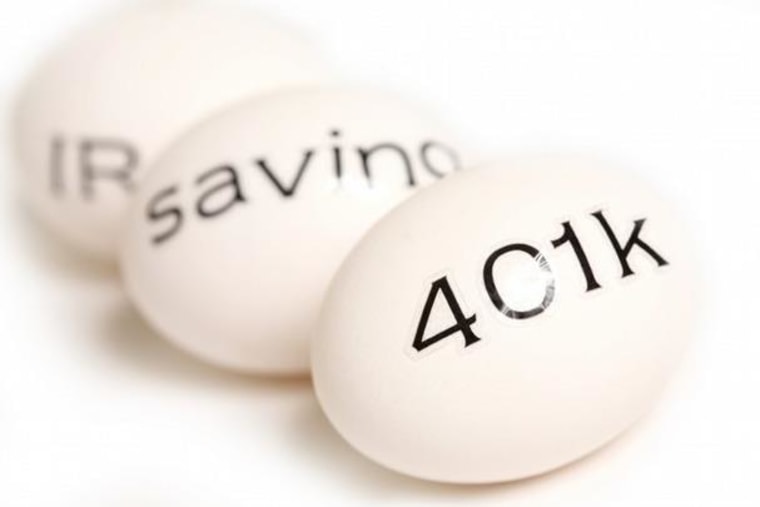What would you do for $3.3 million? Eat worms every day for a month? Spend a year living in a “haunted” house? Take a 10-month vow of silence?
What if all you had to do to get the money was invest?
That $3.3 million number is the result of a recent study by financial website NerdWallet. It ran the numbers on a 25-year-old earning a median income of $40,500. If that person saved a consistent 15 percent annually, they'd have $563,436 at the end of 40 years.
Had they put that money in a savings account, they'd have $1.27 million at the end of four decades.*
But... investing the money in stocks (with the historical return on the S&P 500 as a proxy) brought the total to $4.57 million. The difference: A whopping $3.3 million. Just for buying the market.
Why is this important? Because 63 percent of millennials are socking at least some of their retirement funds into savings rather than investing it. That's understandable for a generation that got their start in the work world at the height of the recession, often watching their parents stumble simultaneously. And yet... overcoming these investing hang-ups and getting started in the markets is key to long-term financial success. Here's how.
Understand the Cost of Not Investing
The return on savings NerdWallet used is, in fact, significantly higher than the amount you'd receive today if you plunked your money in a traditional savings account. Many financial institutions offer minimal interest — regular savings account interest rates hover around 0.01 percent at Bank of America and Wells Fargo. That means, after taxes and inflation, our investor would be losing money year after year without growing her stash.
Another way to think about the opportunity cost of not investing? “Every dollar you earn through your investments is a dollar you don’t have to earn at your job,” says Stefanie O’Connell, millennial money expert.
Be Honest About What's Stopping You
It's important to know why you're not stepping up to invest. It could be a reason like, “I don’t have enough money,” or “I have too many competing financial obligations” or “Investing seems too complicated and overwhelming.”
Once you’ve identified your excuses, challenge them. Is there not enough money, or is investing not a priority? Is your competing financial obligation too much student loan debt, or do you need to take a look at interest rates and see what you can shuffle around to put money towards both? Is it too complicated, or is there a chance you're scared?
Related: Millennials Would Rather Save Than Spend
“Investing for the first time is like doing anything for the first time,” says O’Connell. “It’s overwhelming because we haven’t done it before. But there’s nothing particularly difficult about it, especially with online tools that do so much of the work for us.”
She compares it to exercising — when you go to the gym for the first time, the machines and equipment look intimidating, but working out isn’t necessarily hard. Once you figure out how to adjust the seat heights and what weights to use, you feel more comfortable. It's the same idea here.
Dive Right In
Back to our hypothetical investor — she saved 15 percent of her annual income no matter what, but that’s not always a realistic scenario for every single year. “Getting that earlier start and having your money invested helps you weather any years the market isn’t doing well or different drains on your budget,” says Arielle O’Shea, NerdWallet’s investing and retirement specialist.
“If you’ve got money in the market early, it’s going to continue working for you.” Worried you won’t have enough cash to get going? “Even $50 a month or $100 a month, it can make a huge difference in the long term,” says Eric Anderson, first vice president and financial adviser at RBC Wealth Management.
Here's where to start: If you have workplace retirement plan like a 401(k), start contributing — and aim to put in enough to take advantage of all offered employer matching dollars. (Anderson says the average match is 3 to 4 percent, but some companies offer up to 6 to 9 percent. That’s free money you can scoop up just by investing in your future.)
Related: Should I Raid My 401(k)?
If you don’t have a workplace plan, set up your own Individual Retirement Account (IRA) or Roth IRA — more on the difference here. As for the investments inside the account, consider choosing low-cost funds that track the markets like total stock market index funds and total bond market index funds, then as you age reduce the percentage in riskier stocks and increase the percentage in riskier bonds. As an alternative, look at target-date funds that automatically rebalance as you age to help you adhere to your asset allocation goals.
With Hayden Field
* The site used the rate on three-month treasury bills as a proxy since savings account interests rates weren't available for the full historical period they analyzed. Treasury bills historically pay similar interest rates to savings accounts.
